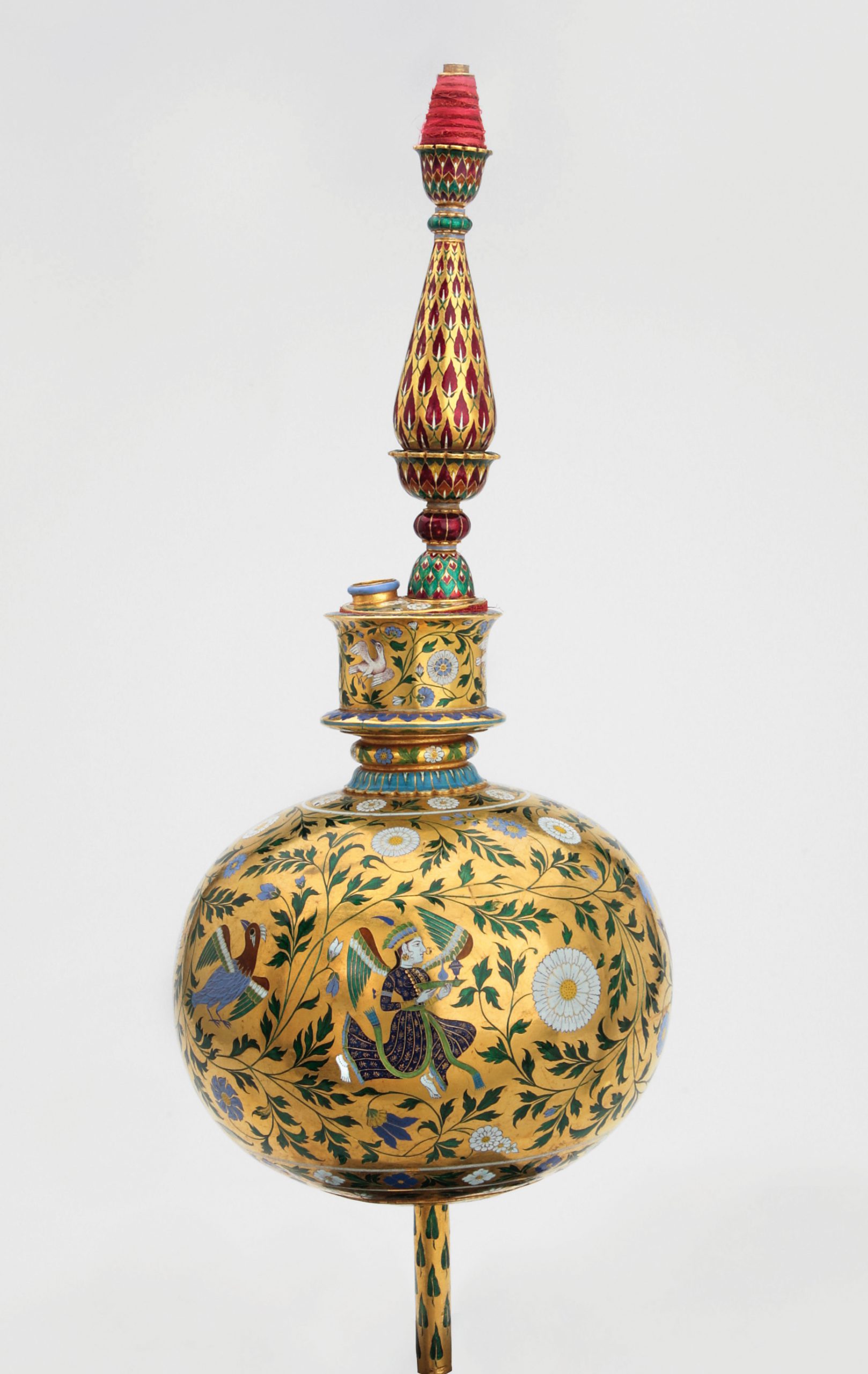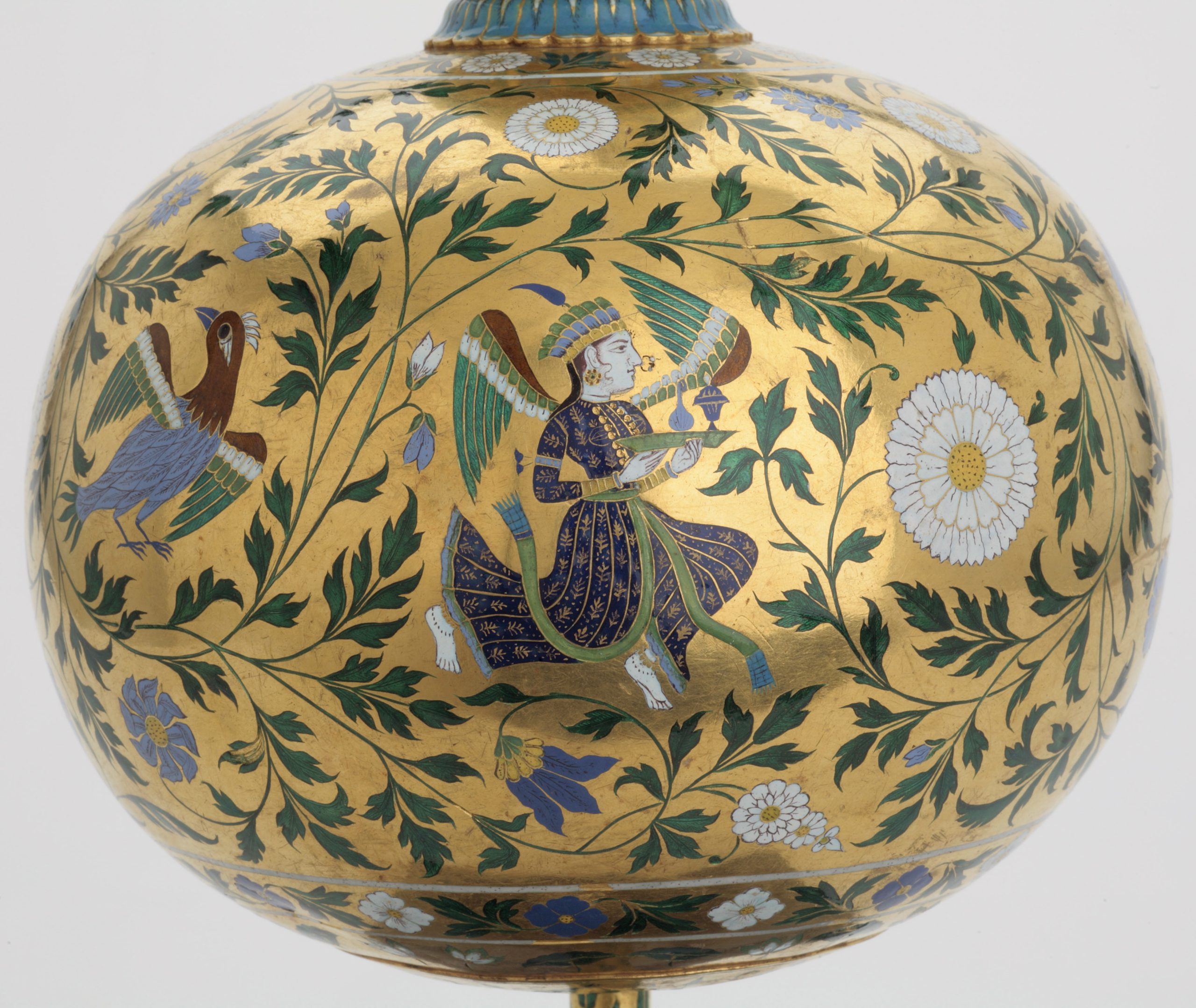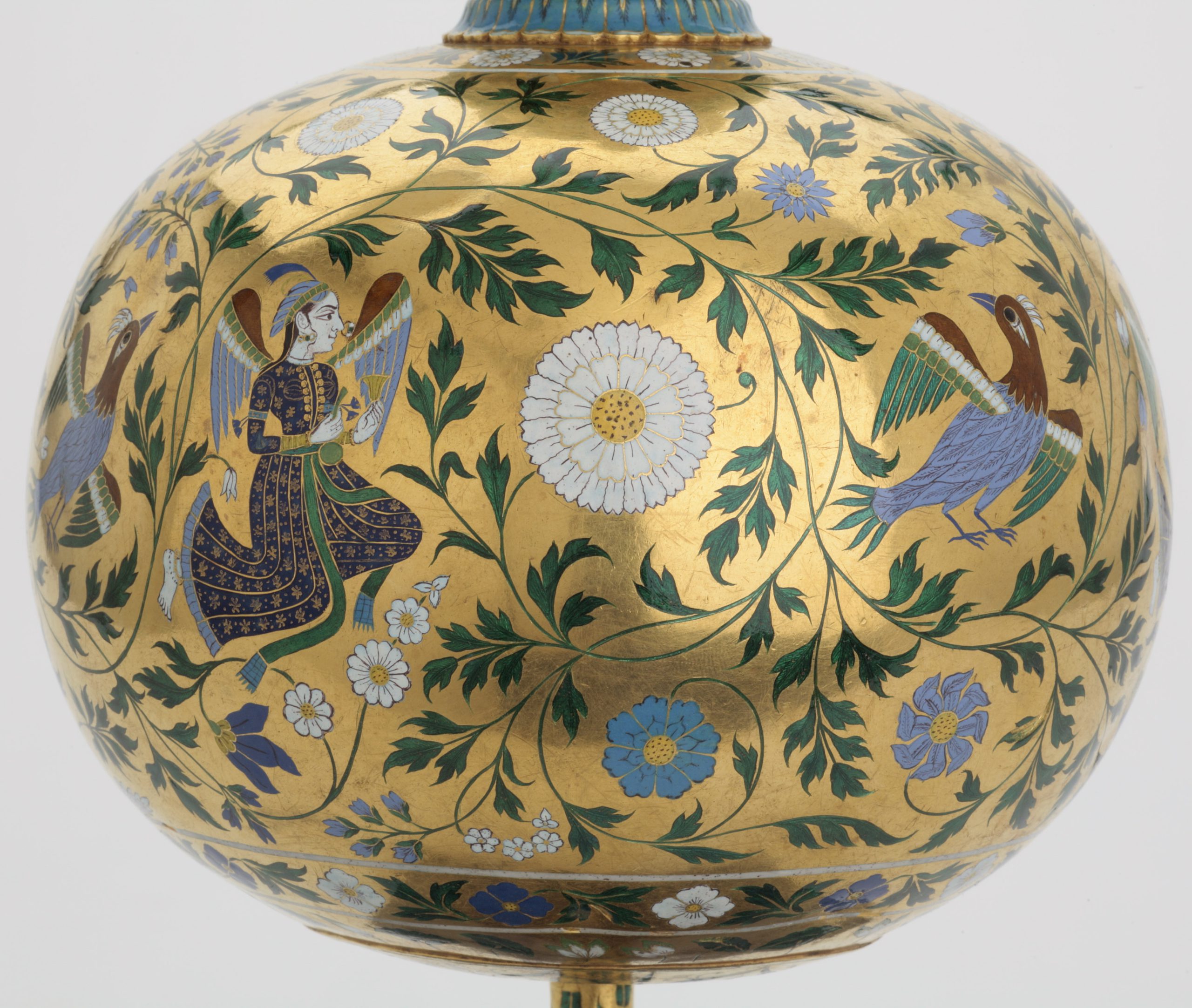 Print Page
Print Page
 Print Page
Print Page
Location: Mewar (Rajasthan), India
Materials: gold on a lac core, with painted, cloisonné and champlevé enamels
Dimensions: height 43cm (assembled)
Accession Number: JLY 1974
Other Notes:
This is the most elaborately decorated enamelled object from the Indian treasury known. Both the water vessel and the support for the tobacco bowl are decorated with translucent cloisonné and opaque champlevé enamels. The designs include flowers, crested birds and lavishly costumed and bejewelled peris offering gifts. Stylistically, the decoration resembles early 18th-century Rajasthani painting and the hookah may be attributed to Mewar, the paramount Rajput state. Here, the hookah was adopted as an attribute of royalty, and many portraits of the Udaipur school show rulers smoking – on horseback or riding an elephant, out walking, playing with their children, receiving guests, embracing courtesans and even bathing [see MSS 965].
Bibliography:
P. Moura Carvalho, Gems and Jewels of Mughal India. Jewelled and enamelled objects from the 16th to 20th centuries, The Nasser D. Khalili Collection of Islamic Art, volume XVIII, London 2010, cat.69, pp.152–7.
J.M. Rogers, The Arts of Islam. Masterpieces from the Khalili Collection, London 2010, cat.354, p.297.


